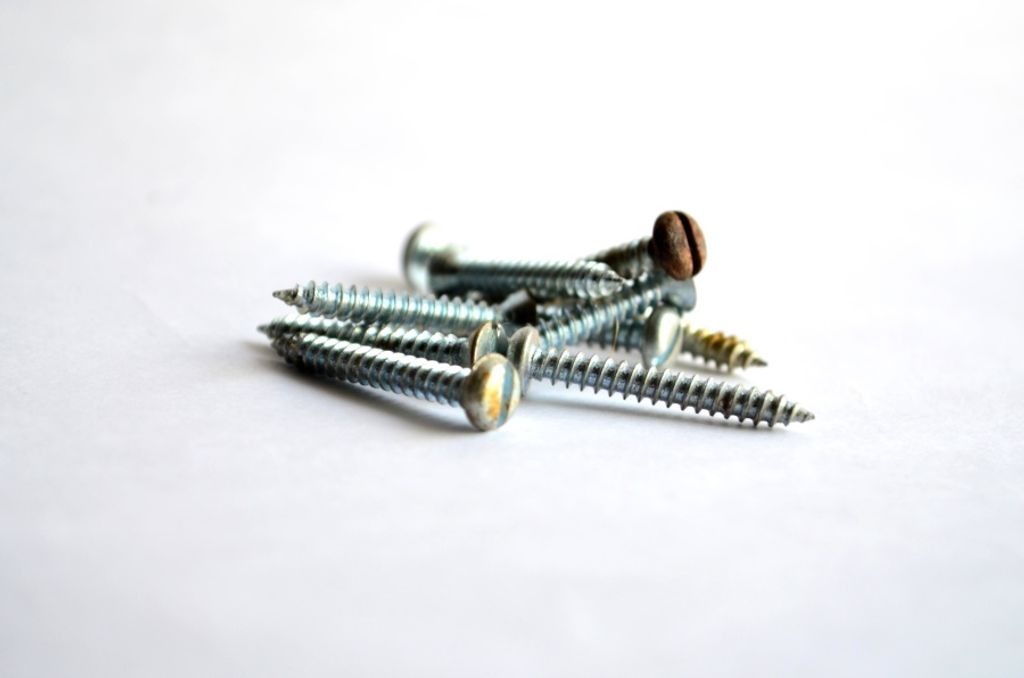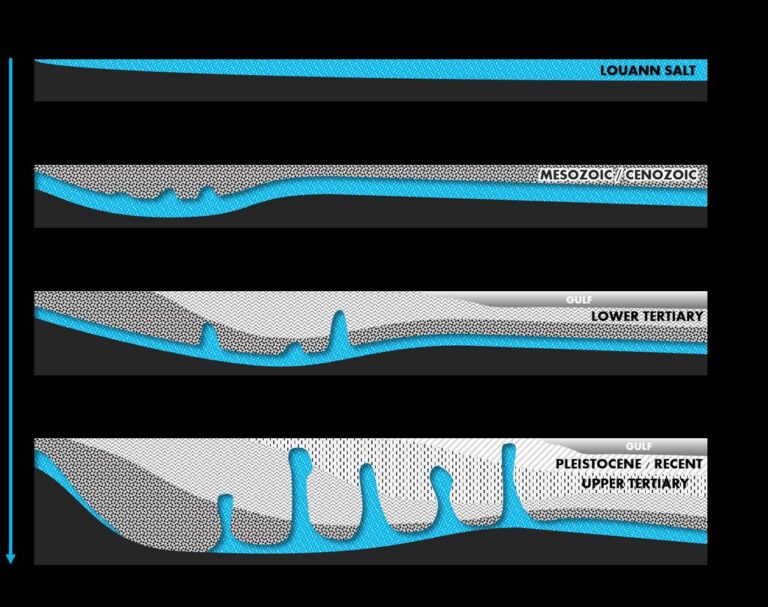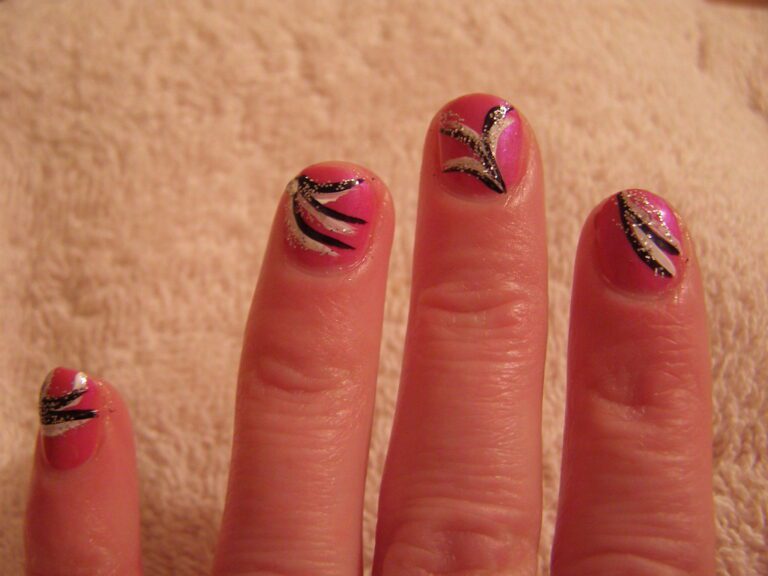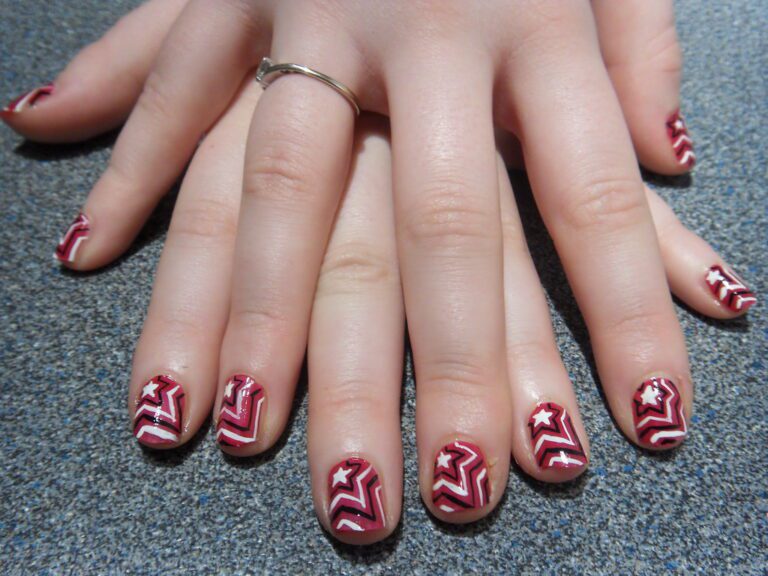“Drywall Dilemma: Will Nails Hold in Drywall?”
In the world of construction, the debate over whether nails can effectively hold in drywall has been a longstanding dilemma. This article delves into the composition of drywall, the mechanics of nails in drywall, comparing nails and screws for drywall installation, best practices for nailing into drywall, common mistakes to avoid, repairing drywall after nail pops, and innovations in drywall fastening. By understanding these key aspects, readers will gain valuable insights into the use of nails in drywall installation and the best practices for achieving optimal results.
Key Takeaways
- Understanding the composition of drywall is crucial for assessing its strength and nail holding capacity.
- Nails interact with drywall differently than screws, and their holding capacity is influenced by various factors.
- Screws offer advantages over nails for drywall installation, including better holding power and reduced risk of damage.
- Proper preparation and technique are essential for enhancing nail retention and minimizing the risk of nail pops.
- Stay updated on emerging technologies and materials for drywall fastening to leverage innovative solutions for improved installation and repair.
Understanding Drywall Composition

The Basics of Drywall Material
Drywall, also known as plasterboard or gypsum board, is a ubiquitous material in modern construction, prized for its ease of installation and smooth finish. At its core, drywall is composed of a layer of gypsum, a mineral known for its fire-resistant properties, sandwiched between two sheets of heavy paper. This composition contributes to drywall’s relatively lightweight nature and its ability to be cut and shaped with common tools.
The standard thicknesses of drywall panels can vary, depending on the application, with the most common being 1/2 inch for walls and 5/8 inch for ceilings. Here’s a quick overview of typical drywall dimensions:
- 1/4 inch: Flexibility for curved surfaces
- 3/8 inch: Typically used for repair and patchwork
- 1/2 inch: Standard thickness for walls
- 5/8 inch: Preferred for ceilings and fire-rated applications
Tip: When selecting drywall for a project, consider the specific requirements of the space, such as moisture resistance or soundproofing, which can be addressed with specialized types of drywall.
Understanding the material properties of drywall is essential for determining how well nails will hold when used for hanging or securing objects. The paper facing provides a slight grip for nails, but the gypsum core lacks the structural integrity to hold nails under significant weight without additional support.
Factors Affecting Drywall Strength
The integrity of drywall is influenced by several key factors that determine its ability to hold nails effectively. Gypsum, cellulose, and talcum are the core constituents that contribute to drywall’s strength, binding properties, and surface smoothness. These materials, when combined, create a stable matrix that can support fasteners to a certain degree.
The thickness of the drywall is another critical factor. It not only determines the strength and insulation properties but also impacts soundproofing, which is particularly important in noisy environments. For instance, thicker drywall is often chosen for its improved thermal performance and noise reduction capabilities, making it suitable for exterior walls and high-traffic areas.
- Structural considerations, such as the intended use and location of the wall, dictate the appropriate drywall thickness.
- Building codes may also influence the choice of drywall, ensuring that it meets safety and performance standards.
- Cost and desired soundproofing levels are additional considerations that can affect the selection of drywall thickness and composition.
Tip: When selecting drywall for your project, consider the environment in which it will be installed. Factors like humidity, temperature fluctuations, and potential impact should guide your choice to ensure optimal performance and durability.
The Mechanics of Nails in Drywall

How Nails Interact with Drywall
When nails are driven into drywall, they must penetrate the gypsum core and anchor into the wooden studs behind it to provide adequate support. The interaction between the nail and the drywall is crucial for the overall stability of the wall covering. Nails that are not properly set can lead to a range of issues, including reduced holding power and the eventual emergence of nail pops.
-
Nails rely on friction and mechanical grip to maintain their position in drywall. Over time, environmental factors such as humidity and temperature changes can cause the drywall to expand and contract, affecting the grip of the nails.
-
Proper nail selection is essential for effective drywall installation. Nails should be of the correct type, size, and length to ensure they can support the intended load without causing damage to the drywall.
Tip: Always ensure that nails are driven straight and to the appropriate depth to maximize their holding capacity and minimize the risk of nail pops.
Limitations of Nail Holding Capacity
When considering the limitations of nail holding capacity in drywall, it’s important to understand the maximum weight that typical drywall can support. Typical drywall can hold up to 1.5 pounds per square foot, while thicker drywall can hold about 2 pounds per square foot without additional assistance. However, it’s crucial to note that these values are influenced by factors such as the installation method and the condition of the drywall. It’s recommended to refer to manufacturer guidelines for specific weight limits based on the type of drywall and installation scenario.
In addition to weight limits, the spacing and pattern of nails also play a significant role in the overall holding capacity of drywall. Proper spacing of nails, especially on wall fields and edges, is essential to ensure uniform weight distribution and prevent structural issues. For instance, in general, space screws a maximum of 16 inches apart on wall fields and 8 inches on wall edges. On ceilings, space the fasteners 12 inches apart on the fields. This spacing guideline helps optimize the load-bearing capacity of the drywall and minimizes the risk of nail pops and structural instability.
It’s important to keep in mind that the quality of the nails used for drywall installation can also impact the holding capacity. Using high-quality nails that are designed for drywall applications can enhance the overall strength and durability of the installation. Additionally, considering the use of screws as an alternative fastening method is worth exploring, as screws offer distinct advantages in terms of holding power and resistance to pullout forces.
In summary, understanding the limitations of nail holding capacity in drywall involves considering the weight limits of the drywall, the spacing and pattern of nails, and the quality of fasteners used. By adhering to recommended guidelines and utilizing appropriate fastening methods, it’s possible to optimize the structural integrity of drywall installations and minimize the risk of performance issues.
Comparing Nails and Screws for Drywall Installation

Pros and Cons of Using Nails
When it comes to hanging drywall, the use of nails is a topic of debate among professionals and DIY enthusiasts alike. Nails are often favored for their ease of use and speed of installation. They can be quickly hammered into place, making them a time-saver on large projects. However, the primary concern with nails is their tendency to loosen over time, leading to the dreaded nail pop, which can mar the appearance of walls.
Nail pops are not just cosmetic issues; they can also indicate a loss of structural integrity in the drywall installation. While nails provide sufficient holding power initially, they are susceptible to the effects of temperature changes and settling of the building structure, which can cause them to protrude from the drywall surface.
Tip: To minimize the risk of nail pops, ensure that nails are driven into the wall studs and not just the drywall itself.
Despite these drawbacks, nails remain a cost-effective option, especially for temporary installations or when budget constraints are a priority. Below is a list of pros and cons to consider when deciding whether to use nails for drywall installation:
Why Screws May Be the Superior Choice
When it comes to fastening drywall, screws are often considered the superior choice over nails. This is due to their design and the way they interact with the drywall material. Drywall screws are specially crafted with sharp, self-tapping threads that allow for a secure grip in the gypsum board. Unlike nails, screws create a stronger bond because they are twisted into place, providing better resistance to pulling and vibration.
One of the key advantages of using screws is their holding power. Screws are less likely to pop out over time compared to nails, which can be pushed out by the natural expansion and contraction of the building materials. Additionally, screws are available in various gauges and lengths, allowing for a more customized fit depending on the thickness of the drywall and the type of studs being used. For instance, most projects utilize #6 gauge screws for standard wood studs.
Tip: Always select the appropriate length and gauge of drywall screws for your project to ensure optimal holding strength and to prevent damage to the drywall.
While screws offer a more reliable hold, they do require more time and effort to install. Each screw must be placed and driven carefully, which can be time-consuming, especially when done manually. However, the extra time invested during installation can lead to a more secure and long-lasting drywall finish.
Best Practices for Nailing into Drywall

Preparation and Tools Required
Before you begin nailing into drywall, ensuring you have the right tools and materials on hand is crucial for a successful installation. Start by selecting the appropriate nails for your project; drywall nails should be ring-shanked and corrosion-resistant to provide better grip and longevity. Additionally, a sturdy hammer or a nail gun can greatly enhance the efficiency of the task.
Preparation is key. Make sure the drywall surface is clean and free from dust or debris that could compromise nail adherence. It’s also important to have a stud finder to locate the wooden studs behind the drywall, as nailing directly into the studs will significantly increase the holding capacity of the nails.
Tip: Always wear safety goggles to protect your eyes from flying debris when nailing into drywall.
Here is a basic list of tools and materials you’ll need:
- Hammer or nail gun
- Drywall nails (ring-shanked)
- Stud finder
- Safety goggles
- Dust mask (for protection against fine particles)
- Measuring tape (for precise placement)
Techniques for Enhanced Nail Retention
When nailing into drywall, it’s crucial to implement proper techniques for enhanced nail retention. One important aspect to consider is the angle at which the nail is driven into the drywall. Ensuring that the nail is driven in at a slight angle can significantly improve its retention. Additionally, using a nail set to countersink the nail slightly below the surface of the drywall can enhance its holding capacity. Another technique is to apply gentle pressure while driving the nail to prevent excessive force that could weaken the drywall. It’s also important to use the correct nail size and type for the specific drywall application. Ensuring that the nail is not too long or too short for the thickness of the drywall is essential for optimal retention. Finally, periodically inspecting the condition of the nails and making any necessary adjustments is key to maintaining the integrity of the drywall installation.
Common Mistakes to Avoid with Drywall Nails

Overdriving and Underdriving Nails
Proper nail installation is crucial for the integrity of drywall. Overdriving nails can cause the drywall to crumble around the nail, compromising the hold and potentially leading to cracks or pops. Conversely, underdriving nails may result in a weak attachment that can’t withstand the weight or pressure applied to the wall.
To avoid these issues, it’s essential to drive nails to the correct depth. A nail should be flush with the surface without breaking the paper face of the drywall. Here’s a simple checklist to ensure proper nailing:
- Use a hammer with a smooth head to prevent damage to the drywall surface.
- Aim for the center of the stud to provide maximum holding power.
- Drive the nail until it is just dimpled, indicating it’s flush with the surface.
Tip: Always check the nail’s depth by running your hand over the surface. If you feel a bump, the nail is overdriven; if it’s not flush, it’s underdriven.
Remember, the goal is to achieve a secure hold while maintaining the integrity of the drywall. By paying attention to the depth of the nails, you can prevent future issues and ensure a lasting installation.
Spacing and Placement Errors
Proper spacing and placement of nails are critical for the integrity of drywall installations. Nails should be spaced at regular intervals to ensure even distribution of weight and to prevent sagging or bulging of the drywall sheets. It’s important to avoid common mistakes such as placing nails too close to the edges, which can cause the drywall to crack, or too far apart, which can compromise the wall’s stability.
- Use a stud finder to accurately locate the studs and ensure nails are driven into a solid backing.
- Follow the general rule of thumb for nail spacing: approximately 7 inches along the edges and 12 inches in the field.
Tip: Always double-check your measurements before driving nails to prevent misalignment and potential structural issues.
In addition to proper spacing, the placement of nails is just as crucial. Nails should be driven straight and flush with the drywall surface to avoid ‘pops’ or protrusions. Overdriving nails can weaken the drywall’s hold, while underdriving can leave unsightly bumps on the wall surface.
Repairing Drywall After Nail Pops

Identifying the Causes of Nail Pops
Nail pops in drywall are a common issue that can mar the appearance of walls and ceilings. Understanding the root causes is essential for effective repair and prevention. One of the most frequent reasons for nail pops is foundation settlement, which can be influenced by various factors such as soil expansion, soil contraction, and inadequate water drainage.
Temperature fluctuations and humidity can also cause the drywall to expand and contract, leading to nail pops. Additionally, improper installation techniques, such as overdriving or underdriving nails, can compromise the drywall’s integrity, resulting in nail pops over time.
Tip: Always ensure that nails are driven at the correct depth and that the drywall is adequately supported to minimize the risk of nail pops.
Identifying the specific cause in your home may require a closer look at the environmental conditions and the installation quality. Addressing these issues not only fixes the current nail pops but also helps prevent future occurrences.
Step-by-Step Guide to Drywall Repair
After completing the necessary repairs to fix nail pops in drywall, it’s important to take preventive measures to avoid future occurrences. One effective method is to use a slightly larger nail or a screw for reattachment. This can provide better stability and reduce the likelihood of nail pops in the future. Additionally, applying a thin layer of joint compound over the repaired area can help to reinforce the bond and create a smoother finish. It’s important to ensure that the area is thoroughly dry and free of dust before applying the joint compound.
If nail pops persist despite these measures, it may be necessary to consult a professional for a more comprehensive assessment and repair. Professional drywall contractors have the expertise to identify underlying issues and implement suitable solutions to prevent recurring nail pops. Remember, addressing the root cause of nail pops is crucial for maintaining the integrity and appearance of your drywall.
Innovations in Drywall Fastening

Emerging Technologies and Materials
The landscape of drywall fastening is witnessing a transformative phase with the advent of emerging technologies and new materials. Innovations in this field are not only enhancing the durability and performance of fasteners but also introducing features that cater to modern construction needs.
One of the most significant breakthroughs has been the development of advanced materials and coatings that significantly improve the strength and longevity of fasteners. These innovations are pivotal in addressing the age-old issue of nail pops and fastener failure. Additionally, the industry is seeing a trend towards ultra-thin fasteners, which promise a less intrusive and more aesthetically pleasing finish.
Tip: When considering new fastening technologies, prioritize those that offer anti-vibration properties and faster assembly to ensure a more secure and efficient installation.
The table below outlines some of the key attributes of these new fastening solutions:
| Feature | Description |
|---|---|
| Advanced Materials | Utilization of high-strength alloys and composites. |
| Innovative Coatings | Application of anti-corrosive and friction-reducing layers. |
| Design Improvements | Ergonomic and streamlined designs for better performance. |
| Security Enhancements | Features that deter tampering and improve safety. |
Future Trends in Drywall Installation
As the construction industry continues to evolve, so too does the technology surrounding drywall installation. The future promises a shift towards more sustainable and efficient practices, with an emphasis on reducing waste and improving the overall quality of installation.
One significant trend is the development of advanced fastening systems. These systems aim to enhance the durability and longevity of drywall installations. They often incorporate new materials and designs that distribute weight more evenly and reduce the likelihood of nail pops and other common issues.
Smart technology is also making its way into drywall installation. Sensors embedded within walls could soon monitor structural integrity, moisture levels, and even the presence of mold. This proactive approach to maintenance can help prevent damage before it becomes extensive, saving homeowners time and money.
Tip: When considering future drywall installation projects, keep an eye out for emerging fastening technologies that promise greater efficiency and reliability.
The industry is also exploring the use of eco-friendly materials that contribute to healthier indoor environments. These innovations are not only beneficial for the planet but also for the occupants of the buildings where they are installed.
Innovations in drywall fastening have revolutionized the construction industry, providing faster and more efficient methods for securing drywall panels. From advanced fasteners to innovative installation techniques, these developments have significantly improved the speed and quality of drywall installation. At NAILinspire.com, we’re dedicated to showcasing the latest innovations in construction and design. Visit our website to explore a wide range of nail art designs, tutorials, and inspiration. Discover the possibilities and unleash your creativity with NAILinspire.com.
Frequently Asked Questions
Can nails hold in drywall?
Nails can hold in drywall, but there are limitations to their holding capacity and factors that affect their effectiveness.
What factors affect the strength of drywall?
The strength of drywall can be affected by factors such as thickness, material composition, and installation technique.
Why may screws be a superior choice for drywall installation?
Screws offer better holding power, reduced chance of nail pops, and easier removal for future repairs.
What are the common mistakes to avoid when using drywall nails?
Common mistakes include overdriving or underdriving nails, as well as errors in spacing and placement.
How can nail pops in drywall be repaired?
Nail pops can be repaired by identifying the cause, removing the loose drywall, and patching and finishing the area.
Are there any emerging technologies for drywall fastening?
Yes, there are emerging technologies and materials such as adhesive fasteners and advanced fastening tools for drywall installation.







